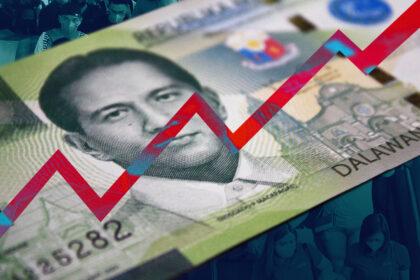After years of steady decline, the Philippine Peso has reached low values with the average exchange rate soaring to ₱57.2907 per US dollar in 2024, marking the highest since 2017.
According to the Bangko Sentral ng Pilipinas (BSP), the peso hovered at ₱55.7890 as of June 5, 2025, still far from its lowest point in 2021 when the exchange rate dipped to ₱49.2546. Since 2022, the peso has not returned to the ₱50 range.
The continuous depreciation has sparked economic concerns, especially as the trend directly affects Filipino households, local businesses, and the government.
The ripple effect
Exchange rates are primarily determined by supply and demand in the foreign exchange market.
According to the Philippine Institute for Development Studies (PIDS), when demand for the US dollar outweighs supply, the peso weakens.
Multiple global and domestic factors influence these fluctuations such as the GDP growth, Overseas Filipino Worker (OFW) remittances, foreign investments, political stability, and the monetary policies of major economies such as the US Federal Reserve, as cited in the Western Union currency guide and PhilArchive studies on global influence.
The depreciation means imported goods become more expensive—a concern echoed by PIDS and the BSP. Basic commodities, fuel, and machinery become costlier to import, driving up the country’s operational and consumer costs.
Winners and losers
The rising exchange rate has mixed implications. While it burdens consumers with higher prices and weaker purchasing power, it boosts the peso value of OFW remittances and makes exports more competitive globally.
Still, the adverse effects dominate. “We expect an increase in prices as most products and even raw materials are imported,” said Robert Go, spokesperson of the Philippine Retailers Association-Cebu Chapter.
Weaker peso raises import costs, drives up prices of goods, fuel, and materials, worsening inflation.
Policy and outlook
The BSP uses monetary tools such as adjusting interest rates and money supply to manage volatility. The central bank also intervenes in the foreign exchange market to moderate sharp fluctuations.
In its March 2025 press release, BSP noted that business sentiment had weakened in Q1 2025 due to a post-holiday demand slump and concerns over a resurgent inflation.
However, the inflation rate as of May 2025 dropped to 1.3%—the lowest since November 2019—bringing the year-to-date average to 1.9%. This indicates that the overall inflation outlook remains within BSP’s target range of 2-4%, supported by easing global commodity prices and targeted tariff reductions.
A call to pay attention
Experts stress that simply lowering the exchange rate is not enough. For the economy to recover, the government must ensure transparency and proper circulation of money.
As highlighted in the Philippine Development Plan (PDP) 2023-2028, the government is implementing fiscal strategies such as tax reforms, easing restrictions on foreign investments, and boosting public infrastructure investment to stabilize the macroeconomic environment.
The effects of a weakening peso ripple beyond charts and figures, affecting every Filipino’s cost of living. In this exchange rate battle, the masses stand to lose the most.








